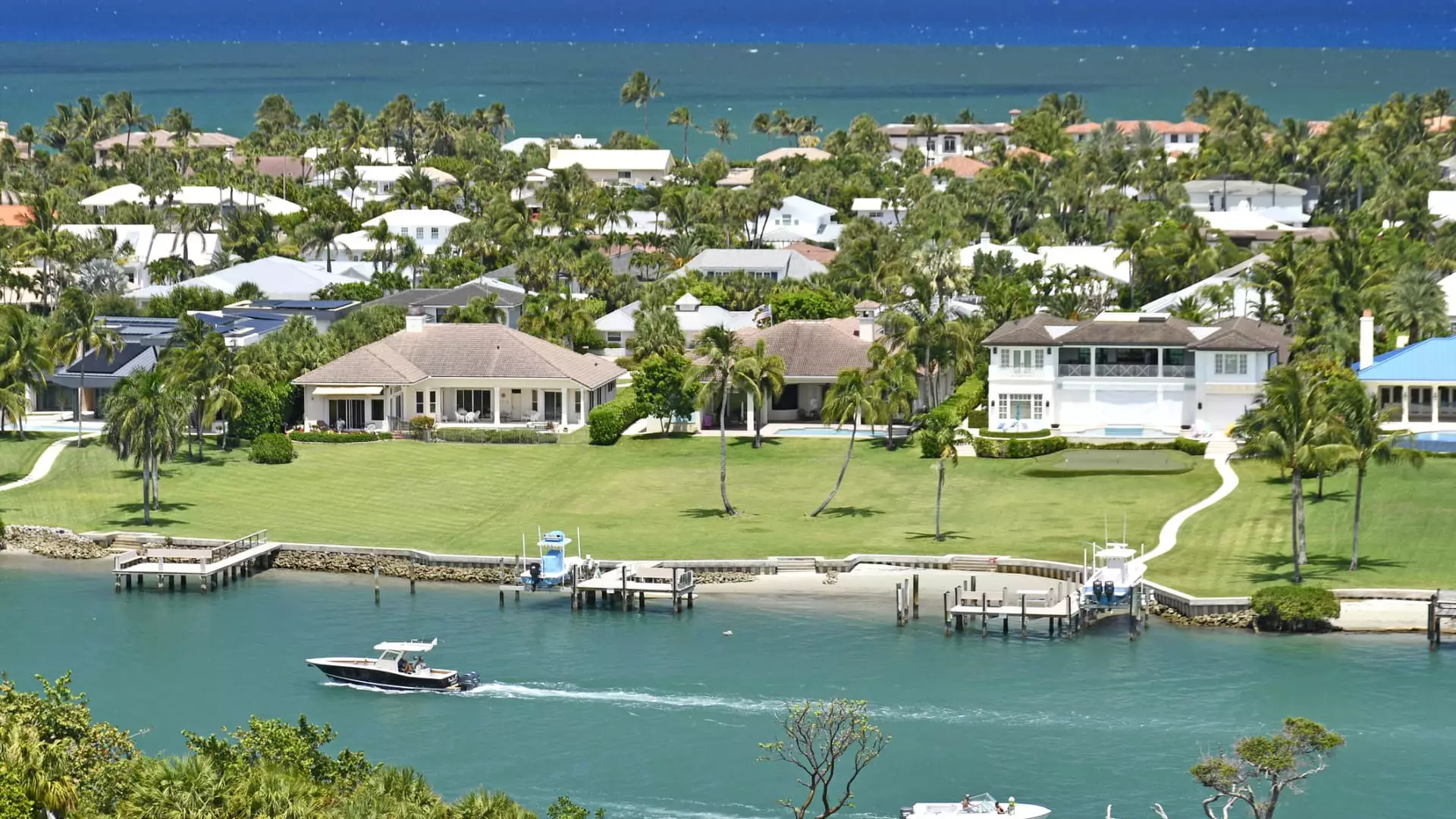The luxury real estate market is undergoing a profound transformation, revealing a dangerous rift between the ultra-rich and the merely affluent. While the ultra-wealthy, defined as those worth over $30 million, continue to snap up opulent properties with an eagerness and financial fluidity that defies economic warnings, the rest of the wealthy follow a markedly cautious approach. This division isn’t just a curiosity—it’s a symptom of deeper economic anxieties exacerbated by rising interest rates and geopolitical instability.
Although luxury property sales remain relatively robust, the enthusiasm of the ultra-rich contrasts sharply with the reticence of their less affluent counterparts. What’s striking is how much cash, rather than financing, now dominates the transactions among the ultra-rich. Their ability to sidestep high borrowing costs exemplifies the growing financial advantages concentrated at the very top of the wealth spectrum. This divide underscores the troubling fact that economic headwinds rarely buffet the ultra-wealthy in the same way they do the majority, further entrenching inequality.
High Interest Rates: A Barrier for Most, a Non-Issue for Some
Elevated borrowing costs are a critical factor reshaping buyer behavior in luxury real estate. For the many who rely partially or wholly on financing, these soaring interest rates have introduced a serious psychological and financial deterrent. Prospective buyers from the “merely wealthy” pool often hesitate or delay investments, calculating if the sacrifice of monthly interest expenses justifies purchasing luxury homes amid current uncertainties.
In stark contrast, ultra-wealthy buyers have increasingly gravitated towards all-cash offers, viewing costly mortgage rates as a needless tax when liquid capital is abundant. This ability to bypass debt not only speeds transactions but strengthens the negotiating position of these fortunate few, allowing them to secure deals others cannot realistically compete for. The market dynamics influenced by high rates, thus, do not merely reflect economic fundamentals but disproportionately benefit those who are already economically privileged.
Real Estate: The Last Bastion Against Economic Tinder
Despite volatility across financial markets, real estate continues to be perceived by many affluent investors as a fortress of stability and a hedge against inflation. This perception endows luxury properties with a form of resilience not afforded to stocks or other assets that can slide rapidly on market tremors.
However, claims of real estate as a “hard asset” safe harbor sometimes obscure the nuanced reality of consumer preferences and demands. The luxury buyers of today are no longer content with lavish size alone—they expect sophisticated features such as smart home technology, spa-style amenities, and seamless indoor-outdoor integrations. This growing taste for experiential luxury points to an evolving market where the superficial trappings of wealth are replaced by genuine lifestyle enhancements, signaling a shift towards quality and innovation even in an uncertain economy.
The Cracks Beneath the Surface: Signs of Market Fragility
Despite some growth in luxury property transactions earlier in the year, a sobering slowdown in May—especially following stock market dips—serves as a warning. Luxury single-family homes dropped in sales by close to 5%, and attached properties witnessed an even more severe decline exceeding 20%. This sharp reduction reflects a susceptible market, vulnerable to shifts in investor confidence.
Furthermore, the observation that sellers increasingly resort to price reductions to remain competitive, coupled with buyers’ newfound judiciousness, signals a market correcting from the overheated activity of previous years. The convergence of these indicators demands a tempering of the exuberant narrative that luxury real estate is an invincible asset class.
Luxury Buyer Preferences: An Emerging Generation of Savvy Consumers
Perhaps one of the most fascinating developments lies in the behavior of newer entrants to the luxury market—first-time buyers who are more discerning than their predecessors. Unlike traditional buyers who may have prioritized status symbols, today’s purchasers focus on technological sophistication and wellness-driven designs. Their insistence on high-end, smart appliances and integrated living environments reveals a broader cultural shift that values sustainability, convenience, and well-being over ostentation.
This evolution should challenge developers and sellers to rethink the luxury sector’s offerings, as failure to adapt to these modern expectations risks alienating a critical segment of potential buyers. It also speaks to a more pragmatic form of luxury, where investments are linked not just to wealth accumulation but to tangible quality of life improvements.
—
In an era where economic turbulence characterizes the landscape, the disparities laid bare in the luxury real estate sector illustrate the stark divides in how wealth buffers uncertainty. The ultra-rich consolidate their dominance with cash purchases and selective acquisitions, while the merely wealthy wrestle with high costs and cautious strategies. Yet within these dynamics, an evolutionary tale of taste, technology, and market resilience quietly unfolds.



Leave a Reply